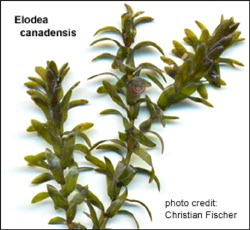Search:
Page Number:
Eye on PhotosynthesisSkills Reference 2 Skills you Will Use
Safety
Caution You will use beakers and test tubes in this activity. Take care when handling glassware. Wear goggles to protect your eyes from the materials used in this lab. The process that plants use to capture the energy in sunlight may be complex, but it is actually fairly simple to study. One of the products of photosynthesis is oxygen gas, so if photosynthesis takes place underwater, oxygen gas should form bubbles.

In this lab, the aquatic plant Elodea canadensis will be used to determine specific conditions that are required for photosynthesis. QuestionWhat raw materials and conditions are involved in photosynthesis? Materials and Equipment
Dry LabA "dry lab" activity includes collected data and/or a video solution for your convenience. You can simply watch the following video and use the provided data, or if you wish to perform this lab for yourself, follow the procedure steps 1 through 9 described in the video. The same steps are included in written form in the documents available for download on the bottom of this page. Forming Conclusions
|